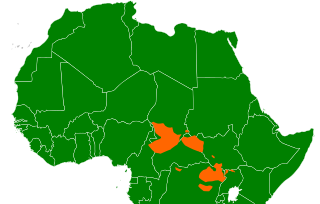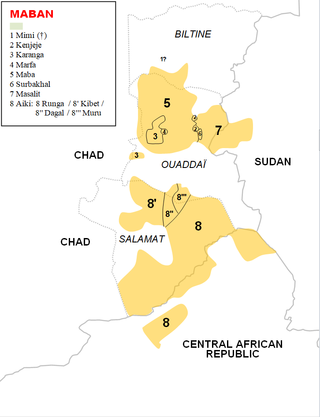Related Research Articles

In linguistics, the comparative method is a technique for studying the development of languages by performing a feature-by-feature comparison of two or more languages with common descent from a shared ancestor and then extrapolating backwards to infer the properties of that ancestor. The comparative method may be contrasted with the method of internal reconstruction in which the internal development of a single language is inferred by the analysis of features within that language. Ordinarily, both methods are used together to reconstruct prehistoric phases of languages; to fill in gaps in the historical record of a language; to discover the development of phonological, morphological and other linguistic systems and to confirm or to refute hypothesised relationships between languages.

The Indo-European languages are a language family native to the northern Indian subcontinent, the overwhelming majority of Europe, and the Iranian plateau. Some European languages of this family—English, French, Portuguese, Russian, Dutch, and Spanish—have expanded through colonialism in the modern period and are now spoken across several continents. The Indo-European family is divided into several branches or sub-families, of which there are eight groups with languages still alive today: Albanian, Armenian, Balto-Slavic, Celtic, Germanic, Hellenic, Indo-Iranian, and Italic; another nine subdivisions are now extinct.
Natural language processing (NLP) is a subfield of computer science and especially artificial intelligence. It is primarily concerned with providing computers with the ability to process data encoded in natural language and is thus closely related to information retrieval, knowledge representation and computational linguistics, a subfield of linguistics. Typically data is collected in text corpora, using either rule-based, statistical or neural-based approaches in machine learning and deep learning.

The Nilo-Saharan languages are a proposed family of around 210 African languages spoken by somewhere around 70 million speakers, mainly in the upper parts of the Chari and Nile rivers, including historic Nubia, north of where the two tributaries of the Nile meet. The languages extend through 17 nations in the northern half of Africa: from Algeria to Benin in the west; from Libya to the Democratic Republic of the Congo in the centre; and from Egypt to Tanzania in the east.

Sandawe is a language spoken by about 60,000 Sandawe people in the Dodoma Region of Tanzania. Sandawe's use of click consonants, a rare feature shared with only two other languages of East Africa – Hadza and Dahalo, had been the basis of its classification as a member of the defunct Khoisan family of Southern Africa since Albert Drexel in the 1920s. Recent investigations however suggest that Sandawe may be related to the Khoe family regardless of the validity of Khoisan as a whole. A discussion of Sandawe's linguistic classification can be found in Sands (1998).

Gustav Nachtigal was a German military surgeon and explorer of Central and West Africa. He is further known as the German Empire's consul-general for Tunisia and Commissioner for West Africa. His mission as commissioner resulted in Togoland and Kamerun becoming the first colonies of a German colonial empire. The Gustav-Nachtigal-Medal, awarded by the Berlin Geographical Society, is named after him.

Amdang is a language closely related to Fur, which together constitute a branch of the Nilo-Saharan language family. It is mainly spoken in Chad, north of the town of Biltine, and sporadically elsewhere in Ouaddaï Region. There are also small colonies of speakers in Darfur near Woda'a and Fafa, and in Kordofan in the Abu Daza district and at Magrur north of Bara. Most of the ethnic group now speaks Arabic.
The Bua languages are a subgroup of the Mbum–Day subgroup of the Savanna languages spoken by fewer than 30,000 people in southern Chad in an area stretching roughly between the Chari River and the Guéra Massif. They were labeled "G13" in Joseph Greenberg's Adamawa language-family proposal. They are ultimately part of the Niger–Congo family, and have exerted a significant influence on Laal.
An unclassified language is a language whose genetic affiliation to other languages has not been established. Languages can be unclassified for a variety of reasons, mostly due to a lack of reliable data but sometimes due to the confounding influence of language contact, if different layers of its vocabulary or morphology point in different directions and it is not clear which represents the ancestral form of the language. Some poorly known extinct languages, such as Gutian and Cacán, are simply unclassifiable, and it is unlikely the situation will ever change.

The Niellim language is a Bua language spoken by some 5,000 people along the Chari River in southern Chad. It is mainly spoken in two areas: one around the city of Sarh and one, its traditional home, further north, between about 9°30′ and 9°50′ N, corresponding to the former chiefdoms of Pra and Niou, as well as the Niellim Sultanate.
The Bua language is spoken north of the Chari River around Korbol and Gabil in Chad. In 1993 it was spoken by some 8,000 people. It is the largest member of the small Bua group of languages and is mutually comprehensible with Fanian. Kawãwãy (Korom) may be a dialect or a distinct language.

The Tasmanian languages were the languages indigenous to the island of Tasmania, used by Aboriginal Tasmanians. The languages were last used for daily communication in the 1830s, although the terminal speaker, Fanny Cochrane Smith, survived until 1905.

Central Sudanic is a family of about sixty languages that have been included in the proposed Nilo-Saharan language family. Central Sudanic languages are spoken in the Central African Republic, Chad, Sudan, South Sudan, Uganda, Congo (DRC), Nigeria and Cameroon. They include the pygmy languages Efé and Asoa.

The Maban languages are a small family of languages which have been included in the hypothetical Nilo-Saharan language family.
Sungor is an Eastern Sudanic language of eastern Chad and western Sudan and a member of the Taman branch. It is closely related to Tama with some researchers speaking of a Tama-Assangori continuum.
Yaminawa (Yaminahua) is a Panoan language of western Amazonia. It is spoken by the Yaminawá and some related peoples.

Waikuri is an extinct language of southern Baja California spoken by the Waikuri or Guaycura people. The Jesuit priest Baegert documented words, sentences and texts in the language between 1751 and 1768.
Chono is a poorly attested extinct language of confusing classification. It is attested primarily from an 18th-century catechism, which is not translated into Spanish. Various placenames in Chiloé Archipelago have Chono etymologies, despite the main indigenous language of the archipelago at the arrival of the Spanish being Veliche.
Mimi of Decorse, also known as Mimi of Gaudefroy-Demombynes and Mimi-D, is a language of Chad that is attested only in a word list labelled "Mimi" that was collected ca. 1900 by G. J. Decorse and published by Maurice Gaudefroy-Demombynes. Joseph Greenberg (1960) classified it as a Maban language, like the rather remote Maban relative Mimi of Nachtigal. However, George Starostin (2011) rejects this classification, arguing that similarities to Maban are due to contact with locally dominant Maba, and provisionally regards it as a language isolate, though it is suggestive of Central Sudanic.
Gumuz is a dialect cluster spoken along the border of Ethiopia and Sudan. It has been tentatively classified within the Nilo-Saharan family. Most Ethiopian speakers live in Kamashi Zone and Metekel Zone of the Benishangul-Gumuz Region, although a group of 1,000 reportedly live outside the town of Welkite. The Sudanese speakers live in the area east of Er Roseires, around Famaka and Fazoglo on the Blue Nile, extending north along the border. Dimmendaal et al. (2019) suspect that the poorly attested varieties spoken along the river constitute a distinct language, Kadallu.
References
- ↑ Lukas, Johannes; Völckers, Otto (1938). "G. Nachtigal's Aufzeichnungen über die Sprache der Mimi in Wadai". Zeitschrift für Eingeborenensprachen. 29: 145‒154.
- ↑ Starostin, George (2011). "On Mimi". Journal of Language Relationship. 6: 115–140. doi: 10.31826/jlr-2011-060111 .